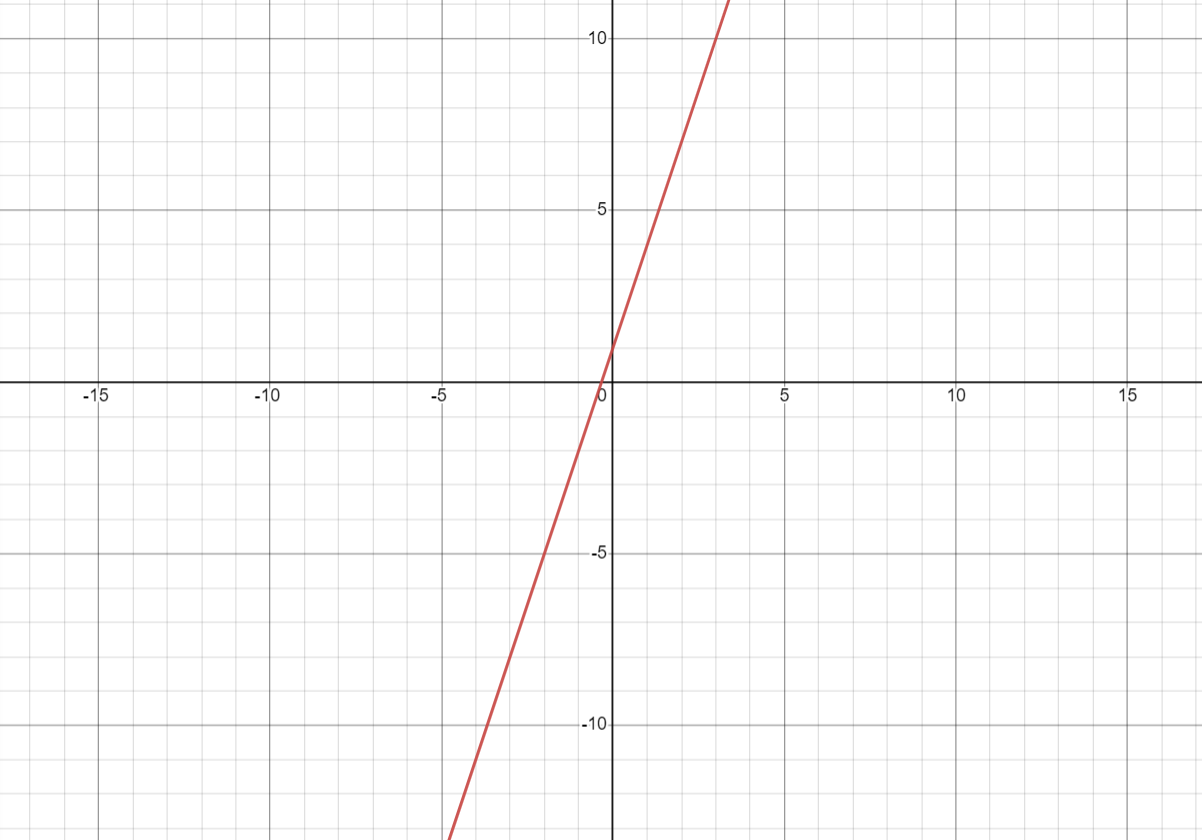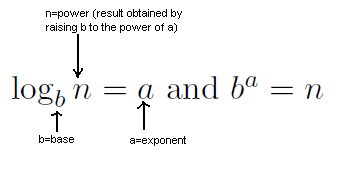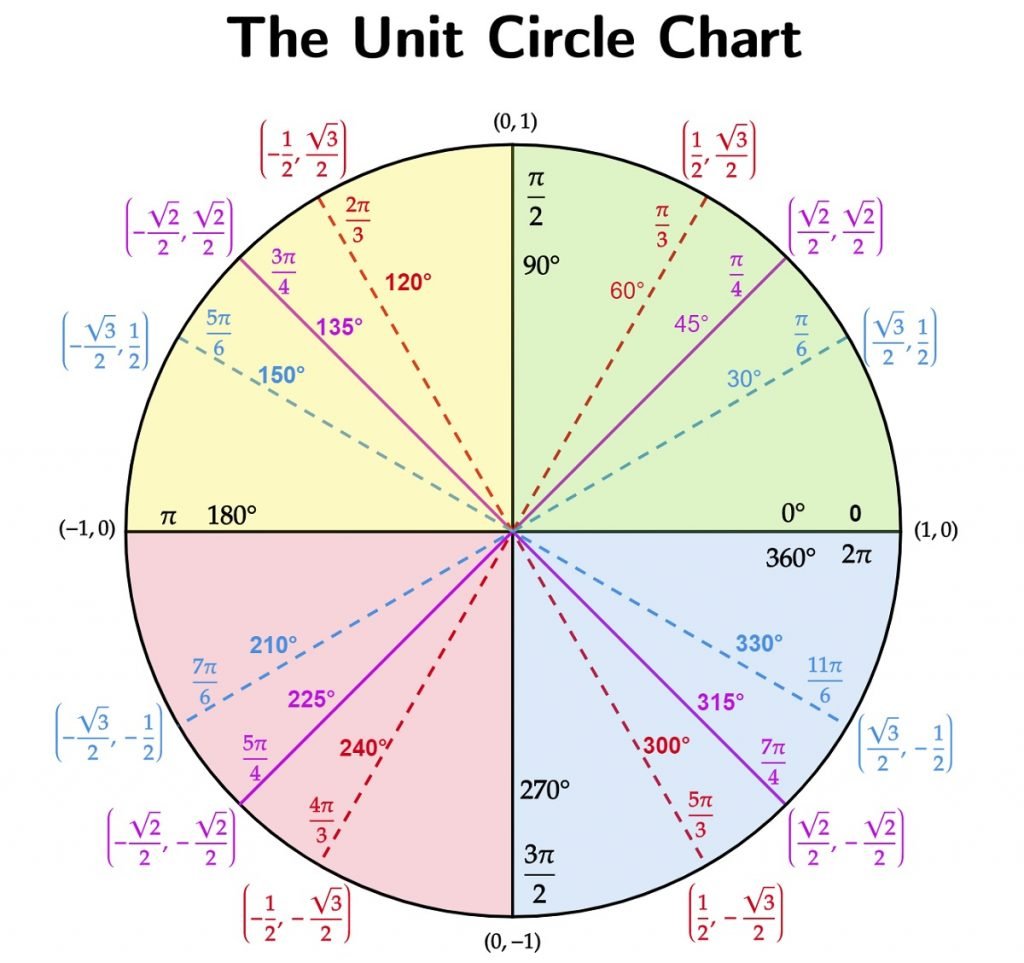PChem and QChem Prep Material
A reintroduction and reframing of some concepts that will be helpful for PChem and QChem
Calculus
Limits:
A limit is one of the most important parts of calculus. The idea of a limit sets the foundation of everything in calculus such that every formal definition of a derivative and an integral is defined through a limit. So! What is a limit? A limit looks like this: \(\lim_{x \to 0} (3x+1)\) where the function $3x+1$ looks like this:

and what our limit is asking is this: as $x$ approaches $0$, what does the function $3x+1$ equal? Basically, if I zoomed in on this graph at $0$, what does the function equal? In this case:
\[\lim_{x \to 0} (3x+1)=1\]This is the simple idea of a limit, and we use this definition to define the rest of calculus.
Diffentiation/Derivative:
A derivative is the instantaneous rate of change (can be visualized by the line tangent to the graph
at a particular point) of a given function. Another way to think about it, the derivative is the SLOPE of the graph! For example:
\(\frac{d}{dx}(2x)=2\)
is the derivative of $2x$ with respect to $x$, and the answer $2$ is the slope/rate of change of $2x$ at all points
on the function. This makes sense since the function $y=mx$ states that $m$ is the slope of the function $y$.
Therefore, the slope/derivative of $y=2x$ is $2$. This understanding of a derivative generalizes to all functions! A function’s instantaneous rate of change at any point can be calculated through its derivative. Here are some
differentation techniques that you will need to know:
- Power Rule:
- Product Rule:
- Quotient Rule:
- Chain Rule (derivative of the inside multiplied by the derivative of the outside):
Common notation types for derivatives which are all equivalent, let $y=f(x)$:
\[\frac{dy}{dx}=\frac{d}{dx}(y)=\frac{df}{dx}=\frac{df(x)}{dx}=\frac{d}{dx}(f(x))\]Derivative Analysis:
With derivatives, we can figure out a lot of interesting information about any particular function. Two important things we can learn about any function can be derived through its first and second derivatives. Take this function:
\[f(x)=x^3+x^2\]And when graphed, looks like this:

When you take the derivative of this function, what does the answer tell you? Well, we know that the first derivative tells us the slope of our graph. For example:
\[f(x)=x^3+x^2\rightarrow f'(x)=3x^2+2x\]tells us that the slope of $f(x)$ is $3x^2+2x$ for all $x$. How about if we take the derivative again? Then, we have
\[f'(x)=3x^2+2x\rightarrow f''(x)=6x+2\]which tells us that the slope of $f’(x)$ is $6x+2$ for all $x$. There are many different interesting things that we can learn about $f(x)$ given $f’(x)$ and $f’‘(x)$. Here are the various things you can learn from these new derivative functions:
-
When the graph’s slope becomes zero! Do this through figuring out when $f’(x)=0$
-
When does the graph go from positive slope to negative slope (also known as critical points)? Do this through the second derivative test. If $f’‘(x)>0$ when $f’(x)=0$, then the graph goes from a negative slope to a positive slope! If $f’‘(x)<0$ when $f’(x)=0$, then the graph goes from a positive slope to a negative slope.
-
Is the graph concave up or down? Concave Up: $f’‘(x)>0$, Concave Down: $f’‘(x)<0$
Summation:
List of topics to include Below
- Integration
- Fundamental Theorem of Calculus
- Integral Table
- Polar Coordinates
- Multiple Integration
Trigonometry
- Logarithms
- Logarithmic Formatting
- $(\log_b n = a \textrm{ and } b^a = n)$

- Natural Logarithms
- Manipulation
- Stirlings Approximation
- Logarithmic Formatting
- Trigonometry Functions and Identities
- Unit Circle
- Series and Series Expansions
Algebra
- Multiplying One by One \(\frac{2+2}{4}\)
- FOIL \((a+b)(c+d)\)
- Deriving Equations
- Solving a System of Equations
Linear Algebra
- Eigen Functions
- Eigen Function:
- Eigen Value:
- Eigen Vector:
- Dot Product
- Orthogonality
- Determinants
Statistics
- Normalization
- Expectation Values
- Standard Deviation
- Variance
- Mean, median, mode, etc.
- Probability
- Factorials
